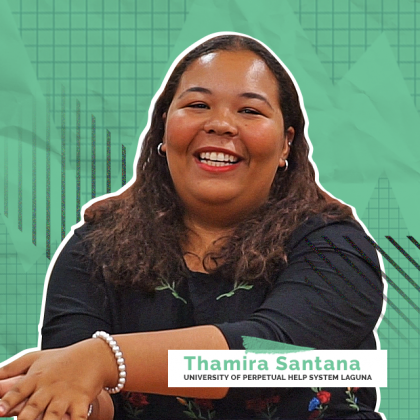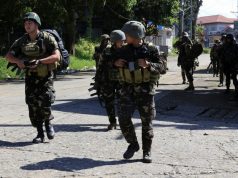Four American high school students immersed themselves in Filipino culture by attending local schools and living with selected Filipino families for 10 months.
The initiative was done through the United States Embassy under the Kennedy-Lugar Youth Exchange and Study Abroad Program or YES for international students
It was originally established by the American government in 2002 following the World Trade Center bombings or the “9/11” attacks.
The program aims to renew efforts of public diplomacy and build bridges between American citizens and people of countries with large Muslim populations.
Sponsored by the U.S. Department of State’s Bureau Educational and Cultural Affairs, qualified American high school students are given the chance to study in other countries to bridge gaps and help promote mutual understanding.
They are sent to different countries for one academic year to understand and appreciate various cultures and forge unique connections.
In return, youth from these countries are given the chance to experience life in the United States “beyond Hollywood” and “beyond the news cycle” so that they could develop an understanding of the life of “everyday American people.”
The program’s counterpart in the Philippines was launched in 2004 and has already benefited over 545 Filipinos through efforts of the U.S. Embassy.
This year, 30 young Filipinos will depart for the United States in August.
The Americans who studied and lived in the Philippines recently are Emily Crumpton, Giana Scattini, Thamira Santana and Kirianna Baker.
The four girls studied in local schools as Grade 12 students from July 2018 to May 2019.
They lived with Filipino host families who exposed them to authentic Pinoy experiences.
Crumpton attended the main campus of the University of Batangas and stayed in Batangas City.
Scattini attended the Lyceum of the Philippines-Laguna and stayed in Calamba, Laguna.
Santana, meanwhile, attended the University of Perpetual Help System Laguna and stayed in Biñan, Laguna.
Baker attended Cainta Catholic College and stayed in Cainta, Rizal.
All of them participated in different activities that highlighted community involvement like teaching children and visiting public hospitals.
Becoming ‘Filipinos’
Studying and living in the Philippines on your own as an 18-year-old is no easy feat. The students said their experiences can be described as both “challenging” and “rewarding” at the same time.
Scattini rode the jeepney—considered the Philippines’ transportation icon—and the tricycle every day, where she learned to utter the phrase “bayad po” whenever she would hand out her fare.

Santana learned how to use a spoon and fork in eating meals. In the United States, people generally eat with a knife and fork while spoons are only used for soups.
The students also experienced and appreciated how hospitable and fun-loving the Filipinos are during their stay.
Santana felt “so much love and happiness” from the way Filipinos would interact with each other.
Simple questions like “Kumain ka na ba?” would always be “filled with such love,” according to her.
“Filipino people are some of the most hospitable people I’ve met… Did you eat? I mean it’s such a simple question but it’s filled with such love, like ‘Did you start your morning right? Are you okay?'” Santana shared with Interaksyon.

“So just going to school every day and just hearing those types of questions, you see them… it’s a warm welcome,” she added.
“Just simple things like that made me feel like I have gratitude towards Filipinos and it’s an experience (that) I will take with me forever,” Santana said.
Scattini also attested to the Filipinos’ fun-loving nature when she recalled how “someone would always have a guitar or a piano” in her class.
“When they say in the Philippines, ‘It’s more fun in the Philippines’ and that couldn’t be more true. No matter where you go, it’s a party,” she said, recalling the famous tourism slogan of the country.
“People are singing, people are dancing. In our classes, someone would always have a guitar or a piano and they’re always playing and they were good, too,” Scattini continued.

Americans would not usually voluntarily sing or dance in such an easy manner, unlike the Filipinos, she observed.
The students also shared that the immersion has helped them “abolish stereotypes” of what people have on Americans and the United States, particularly its high school students.
“I guess for me, it was just kind of abolishing stereotypes because when I first went into my class, my classmates asked me like, ‘Hey, is American high school like it is on the movies?’ and stuff like that so I (would) explain to them, ‘No, it’s not always like that, it’s not Hollywood, you know’,” Crumpton said.
“So I think that was a good thing and just being able to show them that I’m a person just like them. I’m not any better, we’re all the same,” she continued.
Baker added that she was able to “share” her culture with her Filipino classmates and debunk misconceptions that they have about her country of origin.
“Just being able to share my culture with them and getting (them) to realize that the U.S. isn’t this fairy tale wonderland that some of my classmates think it is,” she said.

“It’s not ‘High School Musical’ but getting to share my culture was one of the things that I had contributed,” Baker added.
For the students, the immersion “opened their eyes” and made them “gain a more open perspective on the Philippines and on the world,” according to Crumpton.
Santana said that being in the Philippines has made her see just “how humans can connect and be (able) to do anything.”
“Since being in the Philippines, I kind of learned a lot more about the people, like I learned about that human connection… being in the Philippines kind of opened my eyes about just how humans can connect and be (able) to do anything,” she shared.
— Artworks and featured video by Interaksyon/Uela Altar-Badayos













